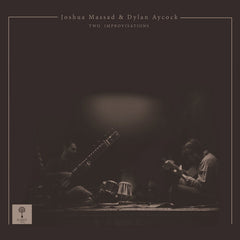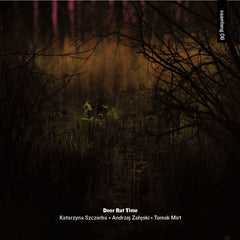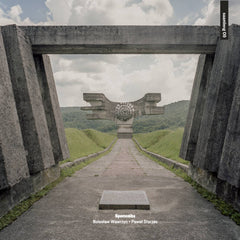Nakibembe Embaire Group // Nakibembe Embaire Group LP
- Availability:
A small village in the Kingdom of Busoga, UgandaIt is a traditional instrument of Nakibembe.This is the debut record released in May 2023 by Nakibembe Embaire Group, a band that plays the giant xylophone "Embert", from the dance label Nyage Nyage in Kampala, the country.
Contains 8 pieces of primitive dance music with full polyrhythm.
Indonesian gamelang gava bandGabber Modus Operandi is also participating.
"Nakibembe, a small village in Uganda's Kingdom of Busoga (one of four remaining constitutional monarchies), has long had a communal space reserved for locals to perform music and socialize. has a deep hole and crosses the groove to amplify the giant xylophone "enver", which consists of 4-15 wooden keys.While log xylophones are common in East Africa, the music played by the Basoga, an eastern Bantu people, is special and unique, with its own tunings, dances, and auxiliary instruments.Up to eight musicians perform simultaneously around Enver, creating an ensemble layered with hypnotic polyrhythms and adding vocals, shakers and drums.
The Nakibembe Xylophone Group was one of the last groups to play with the Humbert, and as anyone who's seen them live will know, they create a complex, multi-layered wall of sound, perfect wherever they play. I am fascinated byThe band are regulars at the Nyege Nyege festival and in 2020 performed at the legendary nightclub Berghain in Berlin with avant-garde bands Gabber Modus Operandi and Harsya Wahono from Jakarta.The debut album features 5 songs as an ensemble and 3 songs as a collaboration with an Indonesian trio.Listened together, they reveal not only Nakibembe's own motion sounds, but sonic ripples that correlate with more distant forms, from Indonesian metallophone-driven gamelan music to the cerebral digital processes of the sound art world.
The 8-minute epic "Omukazi Iwe Ongeyengula Nguli Zna Ntyo Bwenkola" pulls us into the album as a perfect introduction to the Basoga musical tradition.The trio's melodic percussive phrases provide an ever-fluid backbone, leaving space for Shaker to articulate the rhythm with Lusoga's call-and-response vocals. In Omulangira Mpango, the tempo is even higher, the notes and patterns mingling together into a frothy cloud of harmony.It's not hard to notice how these sounds permeate the framework of Western experimental and electronic music, and when you hear them presented uncorrupted, how rarely do you connect with their source. You will have to check whetherAnd when Nakibembe responds to external influences, the connection is mutual and synergistic.
To fuse their technique with the musical approach of GMO and Wahono, they fitted the Ember's keyboard with audio-MIDI triggers to capture the vibration of the instrument without drowning out the sound itself.Based on these recordings and MIDI data, Wahono and GMO digitally distorted and shifted the sound to dangerous new heights, adding vocal improvisation by GMO's Ican Harem.The Indonesian trio wanted to explore a more minimal approach with Nakibembe, and "140" does just that, slowing the Envear crank vortex to crawl, adding sporadic squeaks and punctuation-like bumps. increase. "160" is even more unexpected, losing its envere entirely and feeding raw drum data into synths, popping and squealing with the same unmistakable energy.
Beginning with Ikan Harem's sober narrative, which appeals for similarities between the ethnic traditions of Indonesia and Uganda, it explodes into a trance-like song that fuses serpentine polyrhythms with mesmerizing vocals.Listening to this album, it feels like the past, present and future line up in a straight line.Dance music isn't static, it's not bound by modern apparatus, it's conversation, not colonization, that allows concepts to be extended across false borders. "
Labels and other worksplease use this form. ///Click here to see more Hakuna Kulala / Nyege Nyege Tapes releases available at Tobira.
----------------------------
12 "black vinyl.
Nyege Nyege Tapes:
"In Nakibembe, a small village in Uganda's Busoga kingdom (one of the country's four remaining constitutional monarchies), locals have long reserved a communal area for musical performances and social events. In the middle of this space lies a deep pit that serves a single purpose : to amplify the embaire, an immense xylophone made up of between 15 and 25 wooden keys that stretches across the trench. Log xylophones are common throughout East Africa, but the way the music is played by the Basoga - an Eastern Bantu ethnic group - is specific and unique, with its own tuning, dances and supplemental instrumentation. Up to eight players can surround the embaire and play simultaneously, overlaying hypnotic polyrhythms while additional members of the ensemble add vocals or play shakers and drums.
Nakibembe Xylophone Group are one of the last remaining groups that perform with the embaire, and as anyone who's caught their live performances will know, they create a complex and layered wall of sound that's completely transfixing wherever it's presented. Nyege Nyege festival, and in 2020 appeared in Berlin at the legendary Berghain nightclub alongside Jakarta-based vanguards Gabber Modus Operandi and Harsya Wahono. ensemble and three tracks in collaboration with Indonesian trio. Heard together the music demonstrates not only the remarkable sound of Nakibembe's own kinetic interaction, but sonic ripples that correlate with more distant forms, from Indonesia's metallophone-led gamelan music to the heady digital processes of the sound art sphere.
Undulating eight-minute epic 'Omukazi Iwe Ongeyengula Nguli Zna Ntyo Bwenkola' draws us into the album, offering the perfect introduction to Basoga musical traditions. Triplet-led melodic percussive phrases provide an ever-fluxing backbone, leaving space for call-and-response vocals in Lusoga and shakers for rhythmic clarity. 'Omulangira Mpango' develops the scope even further, pushing up the tempo so the notes and patterns almost blur into clouds of bubbling harmony. It's not difficult to notice how these sounds have seen into the framework of Western experimental and electronic music, and hearing them presented without corruption only serves to confirm how rare it is to connect with the source. And when Nakibembe do correspond with outside influences, the bond is mutual and synergistic.
The group needed to work out a way to combine their techniques with GMO and Wahono's own musical approaches, so they fitted the embaire's keys with audio-to-MIDI triggers that allowed them to capture the instrument's swing without drowning out the sound itself. Nakibembe recorded a series of freestyle performances that would demonstrate the range of the instrument; Wahono and GMO took these recordings and the MIDI data and used digital processes to distort and shift the sounds into dangerous new places, adding vocal improvisations from GMO's Ican Harem. Indonesian trio wanted to explore a more minimalist approach with Nakibembe, and on '140' do exactly that, slowing down the whir of embaire clunks to a crawl and adding sporadic squeals and punctuating bumps. '160' is even more unexpected, losing the embaire completely and feeding the raw drum data into synthesizers that pop and squeak with the same unmistakable energy.
But it's the final track '133' that really seals the deal, opening on a sober narrative from Ican Harem that addresses the parallels between Indonesian and Ugandan folk traditions before exploding into a trance-like fusion of serpentine polyrhythms and disorienting vocals. album is like hearing the past, present and future aligned; dance music is neither static nor bound to its contemporary apparatus, and conversation rather than colonization can stretch concepts beyond phony borders. "
Artist : Nakibembe Embaire Group
Label: Nyege Nyege Tapes
A small village in the Kingdom of Busoga, UgandaIt is a traditional instrument of Nakibembe.This is the debut record released in May 2023 by Nakibembe Embaire Group, a band that plays the giant xylophone "Embert", from the dance label Nyage Nyage in Kampala, the country.
Contains 8 pieces of primitive dance music with full polyrhythm.
Indonesian gamelang gava bandGabber Modus Operandi is also participating.
"Nakibembe, a small village in Uganda's Kingdom of Busoga (one of four remaining constitutional monarchies), has long had a communal space reserved for locals to perform music and socialize. has a deep hole and crosses the groove to amplify the giant xylophone "enver", which consists of 4-15 wooden keys.While log xylophones are common in East Africa, the music played by the Basoga, an eastern Bantu people, is special and unique, with its own tunings, dances, and auxiliary instruments.Up to eight musicians perform simultaneously around Enver, creating an ensemble layered with hypnotic polyrhythms and adding vocals, shakers and drums.
The Nakibembe Xylophone Group was one of the last groups to play with the Humbert, and as anyone who's seen them live will know, they create a complex, multi-layered wall of sound, perfect wherever they play. I am fascinated byThe band are regulars at the Nyege Nyege festival and in 2020 performed at the legendary nightclub Berghain in Berlin with avant-garde bands Gabber Modus Operandi and Harsya Wahono from Jakarta.The debut album features 5 songs as an ensemble and 3 songs as a collaboration with an Indonesian trio.Listened together, they reveal not only Nakibembe's own motion sounds, but sonic ripples that correlate with more distant forms, from Indonesian metallophone-driven gamelan music to the cerebral digital processes of the sound art world.
The 8-minute epic "Omukazi Iwe Ongeyengula Nguli Zna Ntyo Bwenkola" pulls us into the album as a perfect introduction to the Basoga musical tradition.The trio's melodic percussive phrases provide an ever-fluid backbone, leaving space for Shaker to articulate the rhythm with Lusoga's call-and-response vocals. In Omulangira Mpango, the tempo is even higher, the notes and patterns mingling together into a frothy cloud of harmony.It's not hard to notice how these sounds permeate the framework of Western experimental and electronic music, and when you hear them presented uncorrupted, how rarely do you connect with their source. You will have to check whetherAnd when Nakibembe responds to external influences, the connection is mutual and synergistic.
To fuse their technique with the musical approach of GMO and Wahono, they fitted the Ember's keyboard with audio-MIDI triggers to capture the vibration of the instrument without drowning out the sound itself.Based on these recordings and MIDI data, Wahono and GMO digitally distorted and shifted the sound to dangerous new heights, adding vocal improvisation by GMO's Ican Harem.The Indonesian trio wanted to explore a more minimal approach with Nakibembe, and "140" does just that, slowing the Envear crank vortex to crawl, adding sporadic squeaks and punctuation-like bumps. increase. "160" is even more unexpected, losing its envere entirely and feeding raw drum data into synths, popping and squealing with the same unmistakable energy.
Beginning with Ikan Harem's sober narrative, which appeals for similarities between the ethnic traditions of Indonesia and Uganda, it explodes into a trance-like song that fuses serpentine polyrhythms with mesmerizing vocals.Listening to this album, it feels like the past, present and future line up in a straight line.Dance music isn't static, it's not bound by modern apparatus, it's conversation, not colonization, that allows concepts to be extended across false borders. "
Labels and other worksplease use this form. ///Click here to see more Hakuna Kulala / Nyege Nyege Tapes releases available at Tobira.
----------------------------
12 "black vinyl.
Nyege Nyege Tapes:
"In Nakibembe, a small village in Uganda's Busoga kingdom (one of the country's four remaining constitutional monarchies), locals have long reserved a communal area for musical performances and social events. In the middle of this space lies a deep pit that serves a single purpose : to amplify the embaire, an immense xylophone made up of between 15 and 25 wooden keys that stretches across the trench. Log xylophones are common throughout East Africa, but the way the music is played by the Basoga - an Eastern Bantu ethnic group - is specific and unique, with its own tuning, dances and supplemental instrumentation. Up to eight players can surround the embaire and play simultaneously, overlaying hypnotic polyrhythms while additional members of the ensemble add vocals or play shakers and drums.
Nakibembe Xylophone Group are one of the last remaining groups that perform with the embaire, and as anyone who's caught their live performances will know, they create a complex and layered wall of sound that's completely transfixing wherever it's presented. Nyege Nyege festival, and in 2020 appeared in Berlin at the legendary Berghain nightclub alongside Jakarta-based vanguards Gabber Modus Operandi and Harsya Wahono. ensemble and three tracks in collaboration with Indonesian trio. Heard together the music demonstrates not only the remarkable sound of Nakibembe's own kinetic interaction, but sonic ripples that correlate with more distant forms, from Indonesia's metallophone-led gamelan music to the heady digital processes of the sound art sphere.
Undulating eight-minute epic 'Omukazi Iwe Ongeyengula Nguli Zna Ntyo Bwenkola' draws us into the album, offering the perfect introduction to Basoga musical traditions. Triplet-led melodic percussive phrases provide an ever-fluxing backbone, leaving space for call-and-response vocals in Lusoga and shakers for rhythmic clarity. 'Omulangira Mpango' develops the scope even further, pushing up the tempo so the notes and patterns almost blur into clouds of bubbling harmony. It's not difficult to notice how these sounds have seen into the framework of Western experimental and electronic music, and hearing them presented without corruption only serves to confirm how rare it is to connect with the source. And when Nakibembe do correspond with outside influences, the bond is mutual and synergistic.
The group needed to work out a way to combine their techniques with GMO and Wahono's own musical approaches, so they fitted the embaire's keys with audio-to-MIDI triggers that allowed them to capture the instrument's swing without drowning out the sound itself. Nakibembe recorded a series of freestyle performances that would demonstrate the range of the instrument; Wahono and GMO took these recordings and the MIDI data and used digital processes to distort and shift the sounds into dangerous new places, adding vocal improvisations from GMO's Ican Harem. Indonesian trio wanted to explore a more minimalist approach with Nakibembe, and on '140' do exactly that, slowing down the whir of embaire clunks to a crawl and adding sporadic squeals and punctuating bumps. '160' is even more unexpected, losing the embaire completely and feeding the raw drum data into synthesizers that pop and squeak with the same unmistakable energy.
But it's the final track '133' that really seals the deal, opening on a sober narrative from Ican Harem that addresses the parallels between Indonesian and Ugandan folk traditions before exploding into a trance-like fusion of serpentine polyrhythms and disorienting vocals. album is like hearing the past, present and future aligned; dance music is neither static nor bound to its contemporary apparatus, and conversation rather than colonization can stretch concepts beyond phony borders. "
Artist : Nakibembe Embaire Group
Label: Nyege Nyege Tapes







